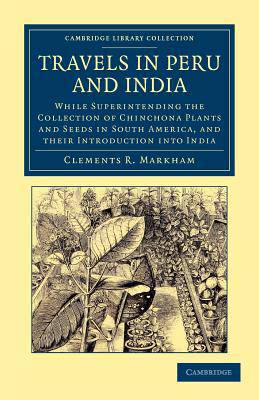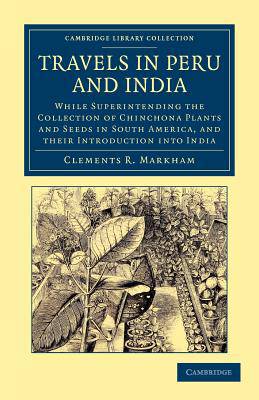
- Afhalen na 1 uur in een winkel met voorraad
- Gratis thuislevering in België vanaf € 30
- Ruim aanbod met 7 miljoen producten
- Afhalen na 1 uur in een winkel met voorraad
- Gratis thuislevering in België vanaf € 30
- Ruim aanbod met 7 miljoen producten
Zoeken
Travels in Peru and India
While Superintending the Collection of Chinchona Plants and Seeds in South America, and their Introduction into India
Clements Robert Markham, Clements R Markham
€ 117,95
+ 235 punten
Omschrijving
Sir Clements Robert Markham (1830-1916) had a lifelong interest in Peru. Having already travelled there in his early twenties, he was commissioned to return ten years later to supervise the collection of sufficient specimens of the cinchona tree for its introduction to India. The bark of the tree yielded quinine, by then a well-known febrifuge and one of the few effective treatments for malaria. This book, originally published in 1862, is Markham's personal account of his travels. His story moves from the misty heights of the Peruvian mountains, where he suffered from altitude sickness, to the Malabar coastline and its complex, remarkable caste system. Markham also includes a detailed history of the use of cinchona bark, both by Europeans and aboriginal Peruvians, and a discussion of Incan culture since the arrival of the Spanish. His work is still a valuable resource for students of scientific and colonial history.
Specificaties
Betrokkenen
- Auteur(s):
- Uitgeverij:
Inhoud
- Aantal bladzijden:
- 618
- Taal:
- Engels
- Reeks:
Eigenschappen
- Productcode (EAN):
- 9781108046718
- Verschijningsdatum:
- 7/06/2012
- Uitvoering:
- Paperback
- Formaat:
- Trade paperback (VS)
- Afmetingen:
- 140 mm x 216 mm
- Gewicht:
- 775 g

Alleen bij Standaard Boekhandel
+ 235 punten op je klantenkaart van Standaard Boekhandel
Beoordelingen
We publiceren alleen reviews die voldoen aan de voorwaarden voor reviews. Bekijk onze voorwaarden voor reviews.








